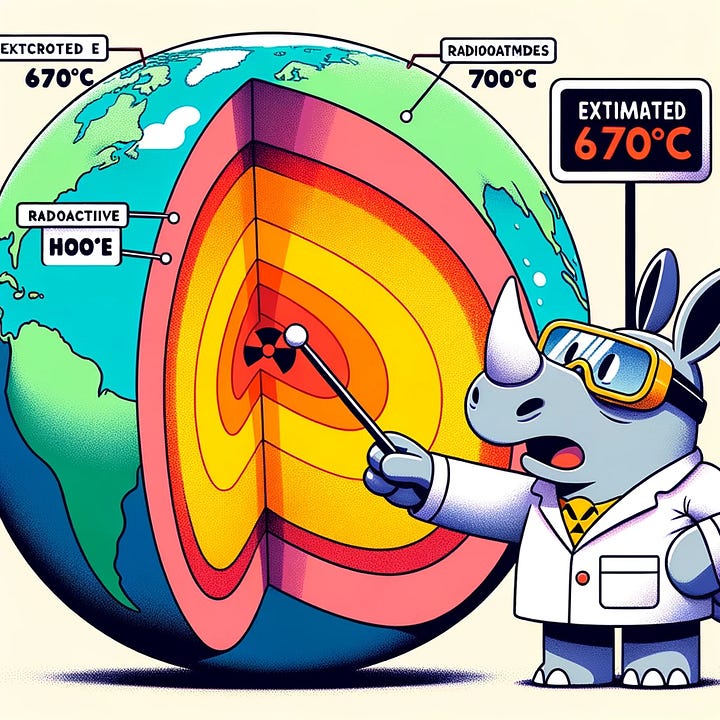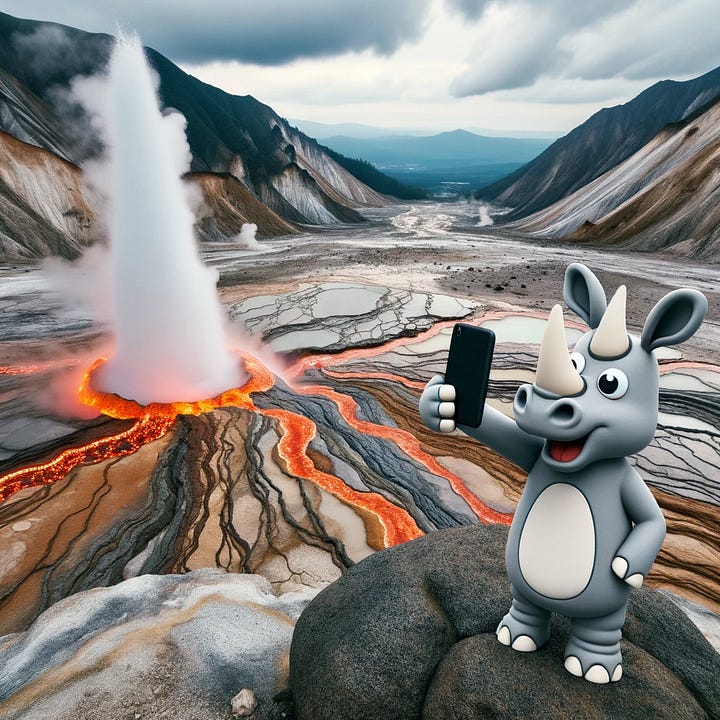Leveraging AI in Modern Classroom Engagement
Revitalizing Classical Teaching Techniques with Artifical Intelligence
With an extensive toolbox, it can be easy to forget about specific tools. There was one tool this week that I brought back out from my teacher's toolbox and used AI to reinvigorate. I will walk you through this by showing you.
The Classical “What Do You See” and “What Do You Think” technique
How to reinvigorate with AI
Practical Applications
What Do You See?
Engagement is the first step in the 5E instructional model. The 5E Inquiry steps are used to reach a specific outcome, and the first involves getting students to question or think about the topic you are introducing. The best way to do this is to get students to look at an image and think about what they see in the image. Typically, you would have the image printed or displayed on the board. You could also do a demonstration for students, but this might take more time. I usually tell students, “You should only spend 3 minutes writing your response.”
What Does this Accomplish?
Instant engagement from the beginning of class. An image draws your students in with a simple question, “What Do You See?”
No prior knowledge is required, which means all students can participate.
A step away from the dreaded “IDK” response.
A quick formative assessment of students’ prior knowledge.
Students associate the topic with a given image; this can be helpful when building students’ knowledge retention.
What Do You Think?
Continuing with the engagement portion of the class is a series of questions aimed at getting students to think about a topic you will discuss. These should be general questions to gauge students’ knowledge and build on prior understanding.
What Does this Accomplish?
Confirm what knowledge was retained from previous units.
Have students build on prior knowledge or extend knowledge from previous units.
Students can begin to think about the topic and the questions that revolve around the topic you are presenting.
Students can look at these questions to see how their knowledge has developed throughout the lesson.
These questions can be used again at the end of the unit for a formative assessment and again later in your summative assessment of the unit.
Reinvigorating WDYS and WDYT with AI
AI has a fantastic feature of generating new images based on prompt generation. It also can change your prompts to generate alternative images, which may be even better than you previously imagined. Imagine taking a copy of your text and telling ChatGPT, “Create an image of the principles from this text using our school mascot.” Now, you can create high-resolution, creative images directly related to the principles from your text involving your school’s mascot.
Regarding the WDYT, you can also have AI do this for you. Just prompt AI to generate 3 WDYT questions, which helps evaluate students’ prior knowledge of a specific text's principles.
What If I Have a Physical Text Book
That’s OK! Most phones and tablets have an amazing text-scanning function that allows you to copy and paste your textbook content into AI to develop your WDYS image and WDYT Questions.
Practical Application of WDYS and WDYT with AI
Let’s take an example of teaching an 8th-grade Physical Science class about the principles of Thermal Energy. I pulled the 2-3 pages of text into AI and asked it to generate images that help students think about the text's principles and include our school mascot…A Rhino. Here are the images it came up with:
WHAT DO YOU SEE?




Regarding WDYT questions, here are the questions for discussion as presented from AI:
WHAT DO YOU THINK?
If you place a pan of water on a stove and turn on the heat, what form of energy is being transferred to the water, and how does this change the water's energy state?
The center of our Earth is incredibly hot, even hotter than the sun's surface! Can you guess what natural processes might be responsible for generating such intense heat deep underground?
Imagine a natural energy source beneath our feet, especially in mountainous regions. How could we harness this energy to power our homes and cities?
Takeaways:
The Classical Technique Revisited: This newsletter highlights the classical teaching techniques "What Do You See" (WDYS) and "What Do You Think" (WDYT), which are used to engage students and stimulate their thinking.
Engagement through WDYS: The first step is to show students an image related to the topic and ask them to write about what they observe. This:
Ensures immediate student engagement.
Requires no prior knowledge, ensuring all students can participate.
Helps avoid generic or non-committal responses like "I don't know.”
Provides a quick assessment of students' prior understanding.
Helps students associate the topic with a particular image, aiding knowledge retention.
Deep Thinking with WDYT: After the initial engagement, the focus shifts to asking students more in-depth questions about the topic. This helps:
Determine the knowledge retained from previous units.
Build upon or extend students' previous understanding.
Set the stage for the topic and related questions.
Track students' progress and understanding throughout the lesson.
Reuse these questions for future assessments.
Reinvigorating with AI: This newsletter introduces the idea of using AI to breathe new life into these classical techniques.
For WDYS: AI can generate new, high-resolution images based on specific prompts, such as combining principles from a text with a school mascot.
For WDYT: AI can be prompted to generate relevant questions that evaluate students' prior knowledge of a text's principles.
Physical Textbook? No Problem: Modern devices have efficient text-scanning functions, even if educators rely on physical textbooks. This allows content to be digitized and fed into AI for generating relevant images and questions.
Practical Application: This newsletter provides a practical example for an 8th-grade Physical Science class on Thermal Energy. Using AI, educators can:
Generate images that help students think about the principles from the text, even integrating elements like a school mascot.
Produce thought-provoking questions for discussion, tailored to the content and ensuring maximum student engagement and understanding.
- Dr. J. J. S. Marsh





